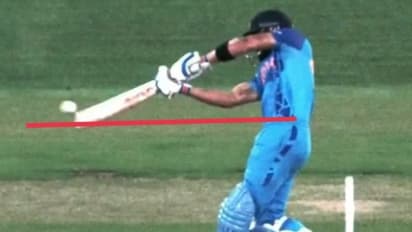IPL introduces Hawk-Eye technology to end debate on above-waist 'No-Balls'

Synopsis
IPL is revolutionising umpiring decisions with the integration of Hawk-Eye technology to address contentious above-waist no-ball calls, ensuring fair play and eliminating controversy in cricket matches.
The IPL has teamed up with Hawk-Eye to resolve the ongoing debate surrounding above-waist no-balls. Utilizing advanced technology, Hawk-Eye now measures the height of the ball as it crosses the batter at the popping crease, matching it against the predetermined toe-to-waist measurement of the batter. If the ball surpasses the recorded waist height of the batter, it is deemed a no-ball; otherwise, it is considered a fair delivery.
During a recent match between Mumbai Indians and Sunrisers Hyderabad, fast bowler Gerald Coetzee became the first player to fall afoul of this new system. His delivery to Abhishek Sharma was adjudged a no-ball after it exceeded Sharma's recorded waist height.
This new process, facilitated entirely by an automated system installed by Hawk-Eye, eliminates the need for third umpire intervention during reviews. Every player's waist height has been meticulously measured and stored in Hawk-Eye's database for accurate assessments.
Trials for this technology have been underway for the past two years, with Hawk-Eye presenting their improved graphics to the IPL following the 2023 season. The introduction of this system aims to eliminate controversial decisions surrounding waist-high no-balls, ensuring fair and consistent adjudication in future IPL editions.
One such contentious decision occurred during the 2023 IPL match between Sunrisers Hyderabad and Lucknow Super Giants. Avesh Khan's delivery to Abdul Samad was initially ruled a no-ball, but the decision was overturned by the third umpire after considering Samad's crouched position at the crease and the ball's trajectory relative to his full standing height.
Also Read: Historic! Hyderabad witnessed record-breaking run fest in SRH vs MI encounter
Stay on top of all the latest Sports News, including Cricket News, Football News, WWE News, and updates from Other Sports around the world. Get live scores, match highlights, player stats, and expert analysis of every major tournament. Download the Asianet News Official App to never miss a sporting moment and stay connected to the action anytime, anywhere.